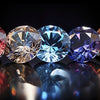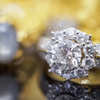Myths and Facts: Debunking Common Misconceptions About Lab-Grown Diamonds
Introduction
Lab-grown diamonds have been a topic of much discussion and speculation. Despite their growing popularity, there are still many myths and misconceptions surrounding these gems. This article aims to debunk some of these myths and provide clarity with factual information about lab-grown diamonds.
Myth 1: Lab-Grown Diamonds are Not Real Diamonds
Fact: One of the most common lab-grown diamonds myths is that they are not real diamonds. However, this is far from the truth. Synthetic diamond facts tell us that lab-grown diamonds have the same physical, chemical, and optical properties as mined diamonds. They are created through processes that replicate the natural diamond-growing conditions in the earth, resulting in a product that is, in every way, a real diamond.
Myth 2: Lab Diamonds are Easily Distinguishable from Natural Diamonds
Fact: This is one of the most persistent debunking diamond misconceptions. Lab-grown or cultured diamonds are virtually identical to natural diamonds and cannot be distinguished with the naked eye. Even professional gemologists require specialized equipment to tell them apart.
Myth 3: Synthetic Diamonds are Inferior in Quality
Fact: The quality of artificial diamonds is not inferior to that of natural diamonds. Lab diamonds can be produced in a range of colors and clarities, similar to natural diamonds. They are also subject to the same grading systems by gemological institutes.
Myth 4: Lab-Created Diamonds are Not Eco-Friendly
Fact: Contrary to the eco-friendly diamond myths, lab-created diamonds have a significantly lower environmental impact than mined diamonds. The production of lab-created diamonds involves fewer carbon emissions, less water usage, and less environmental disruption.
Myth 5: Lab-Grown Diamonds are Much Cheaper
Fact: While it is true that lab-grown diamonds tend to be more affordable than natural diamonds, the notion that they are cheap is misleading. The cost of producing lab-created diamonds can still be high, and their price is influenced by quality factors similar to natural diamonds.
Myth 6: Synthetic Diamonds Will Get Discolored Over Time
Fact: Misunderstood lab diamonds include the misconception about discoloration. Lab-grown diamonds, like their natural counterparts, do not discolor over time. They are made of the same material, carbon, and are just as durable.
Myth 7: Lab Diamonds Lack Resale Value
Fact: While the resale value of lab-grown diamonds may currently be less than that of natural diamonds, it is not accurate to say they have no resale value. As the market for lab-grown diamonds grows, their resale value is also expected to increase.
Myth 8: Ethical Diamond Truths: Lab Diamonds are Not Ethical
Fact: One of the primary benefits of lab-grown diamonds is their ethical production. Unlike mined diamonds, they do not carry the same concerns about conflict or human rights abuses. This makes lab-grown diamonds a more ethical choice in many cases.
Educating on Lab-Grown Diamonds
Education is key to understanding and appreciating lab-grown diamonds. By breaking lab diamond stereotypes and clarifying misconceptions, consumers can make more informed choices about their diamond purchases.
Conclusion
Lab-grown diamonds offer an ethical, sustainable, and high-quality alternative to natural diamonds. Debunking the myths surrounding them is crucial for consumers to understand their true value and potential. As technology and awareness continue to grow, so too will the appreciation for these remarkable gems.












